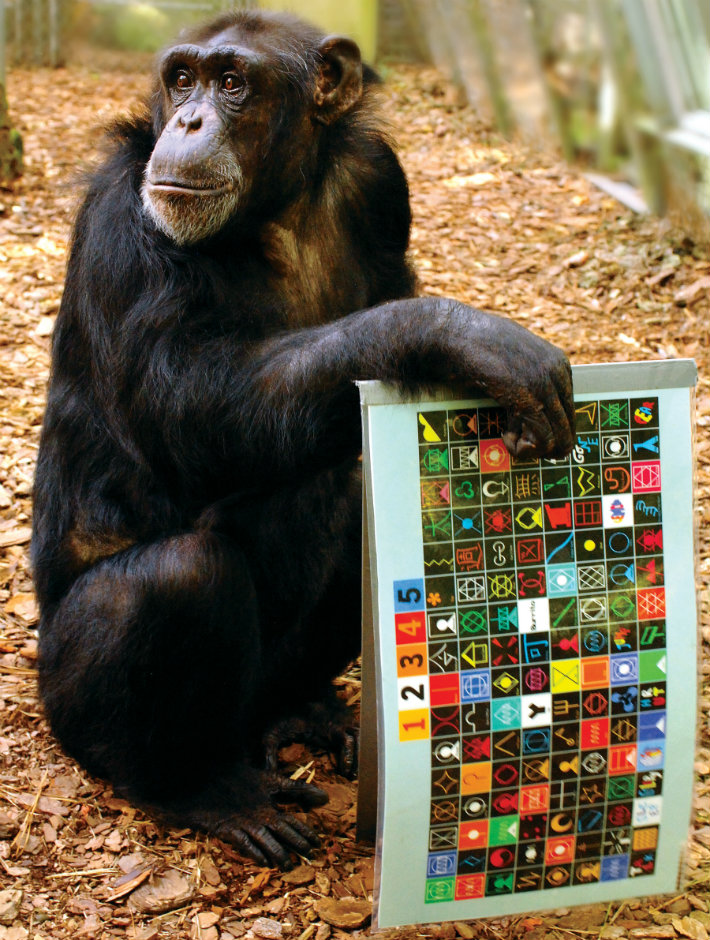
The gestural communication skills of chimpanzees are more sophisticated than was previously thought, according to new research.
The research, carried out by academics at the University of Chester, University of Stirling and Georgia State University, revealed the most compelling evidence primates modify their gestures to ensure they are understood.
The research team, whose work is published in the journal Nature Communications, found this skill enabled chimpanzees to direct the movements of a human to a hidden object.
They applied a task which demanded co-ordination and communication between two language-trained chimpanzees and a human - to find a piece of food that had been hidden in a large outdoor area. The chimpanzees knew the location of the hidden food whilst the human did not.
Dr Anna Roberts, of the University of Chester, said: “The use of gestures to coordinate joint activities such as finding food may have been an important building block in the evolution of language. This study shows that chimpanzees are also capable of using intentional gestures in a flexible way to guide the naïve experimenter to the food item.”
Dr Sarah-Jane Vick from the School of Natural Sciences at the University of Stirling said: “The chimpanzees used gestures such as pointing to gain the assistance of the human and guide him to the location of the food. They changed their gestures according to how the human responded and how close he was to uncovering the hidden food.”
Dr Sam Roberts from the University of Chester said: “This task is similar to the children’s party game ‘Hot or Cold’, in that the chimpanzee had to use gestures to signal to the human experimenter whether they were getting closer (warmer) or further away (colder) from the food item.
“One chimpanzee named Panzee was particularly skilful in this task, as she pointed upwards if the experimenter pointed too close to Panzee, relative to the food’s location, and downwards if the experimenter pointed too far away from the food.”
He added: “This flexible use of pointing, taking into account both the location of the food and the actions of the experimenter, has not been observed in chimpanzees before.”
Dr Sarah-Jane Vick said: “Previous findings in both wild and captive chimpanzees have shown flexibility in their gesture use, for example persisting if they do not get the right response. However, the level of coordination required to solve this task has revealed more complex communicative abilities in this species.”
Dr Charles Menzel, from Georgia State University, said: “The experimental paradigm of chimpanzee-as-director has opened up new ways of studying chimpanzees’ memory of objects and events. It allows the chimpanzees to communicate information in the manner of their choosing, but also requires them to initiate and to persist in communication.
“Because of the openness of this paradigm, the findings illustrate the high level of intentionality chimpanzees are capable of, including their use of directional gestures. This study adds to our understanding of how well chimpanzees can remember and communicate about their environment.”
The project was supported by Leakey Foundation, the Wenner-Gren Foundation, National Institutes of Health (NIH), the Economic and Social Research Council (ESRC), the British Academy, the Carnegie trust for the Universities of Scotland and the University of Stirling.
Chimpanzees Modify Intentional Gestures to Co-ordinate a Search for Hidden Food - on Nature.com
